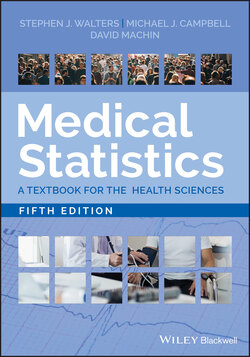Читать книгу Medical Statistics - David Machin - Страница 64
Measures of Symmetry
ОглавлениеOne important reason for producing dot plots and histograms is to get some idea of the shape of the distribution of the data. In Figure 2.6 there is a (slight) suggestion that the distribution of corn size is not symmetric; that is if the distribution were folded over some central point, the two halves of the distribution would not coincide. When this is the case, the distribution is termed skewed. A distribution is right (left) skewed if the longer tail is to the right (left), see Figure 2.9. If the distribution is symmetric then the median and mean will be close. If the distribution is skewed then the median and interquartile range are in general more appropriate summary measures than the mean and standard deviation, since the latter are sensitive to the skewness.
Figure 2.9 Examples of two skewed distributions.
For the corn size data, the mean from the 200 patients is 3.8 mm and the median is 4 mm so we conclude the data are reasonably symmetric. One is more likely to see skewness when the variables are constrained at one end or the other. For example, waiting time or time in hospital cannot be negative, but can be very large for some patients but relatively short for the majority and so it likely to be right or positively skewed.
A common skewed distribution is annual income, where a few high earners pull up the mean, but not the median. In the UK about 68% of the population earn less than the average wage, that is, the mean value of annual pay is equivalent to the 68th percentile on the income distribution. Thus, many people who earn more than the earnings of 50% (the median) of the population will still feel under paid!
